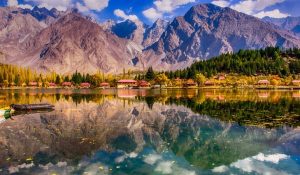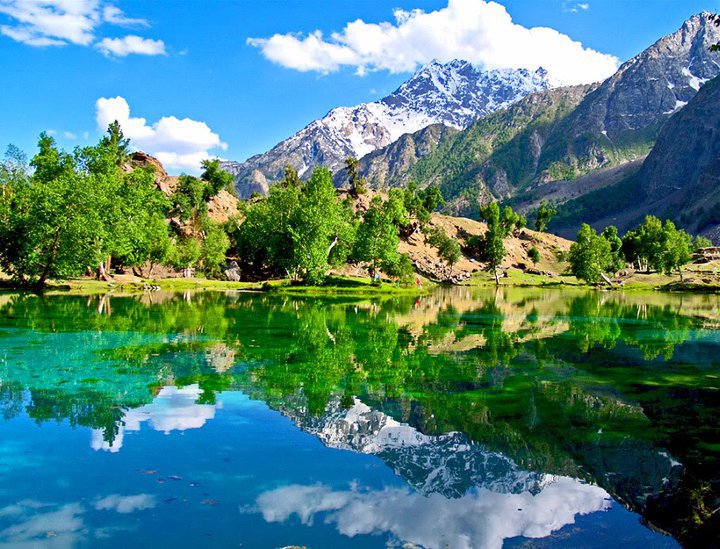Nature is beautiful, and one of the most beautiful creations of nature is lakes. People all over the world like to spend time boating, fishing, and even swimming in lakes. Lakes also provide wonderful sceneries and are providing great opportunities for picnics. Pakistan is blessed with immense natural beauty and Pakistan has its fair share of lakes. In fact, Pakistan has some of the most beautiful lakes in the world. Many of the lakes are located in the northern areas of Pakistan, in the province of Khyber Pakhtunkhwa, and in Azad Kashmir. There are a few lakes in Punjab, Sindh, and Balochistan as well. Today we are going to take a look at some of the most beautiful lakes in Pakistan. These lakes are famous for their natural beauty, freshwater, and spectacular scenery.
Saiful Malook:
Saiful Malook is the source of river Kunhar, which is situated in the northern parts of the Kaghan Valley near the Narran town. It is one of the highest Pakistani lakes which is at an elevation of about 10,578 ft. It has a depth of about 50 ft. and occupies an area of about 1.06 sq. miles. It was created by a glacial moraine that blocked the water of a stream that was flowing through Kaghan Valley. The valley was formed during the last Pleistocene era which dates back to over 300,000 years ago. The receding glaciers and rising temperatures left a depression in this area. It’s named after a legendary Persian prince who met the love of his life Princess Badri-ul-Jamala on this lake.
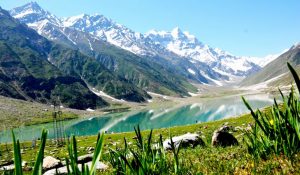
Kanpur Lake:
Kanpur Lake is a reservoir that is in Khyber Pakhtunkhwa, Pakistan. The artificial lake was formed by the Kanpur Dam, and it supplies irrigation water to numerous industrial and agricultural areas. It is the source of drinking water in Rawalpindi and Islamabad. The lake is about 25 miles from Islamabad, in the Hazara division. It was constructed in 1983 together with the Kanpur Dam. The 167 ft. the high dam has a total capacity of about 110,000-acre feet. It receives water from River Haro. There is an island in the middle of the lake which is ideal for picnics.
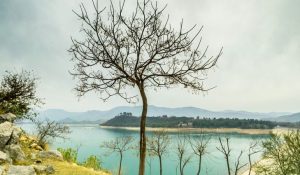
Rama Lake:
Lakes attract many passionate nature admirers, but also athletes and curious travelers. Particularly interesting are artificial accumulations which men once created, hoping that nature will embrace them. The Rama Lake offers a plentiful of options for an active holiday such as fishing, boating, swimming or hiking, but astonishingly this gem is still relatively untouristy. Among rare but regular visitors are some of the world’s best rowers who come here each year to prepare for the competitions. If you are a nature enthusiast always on the hunt for relaxing. It is situated in Astore Valley, Gilgit Baltistan.
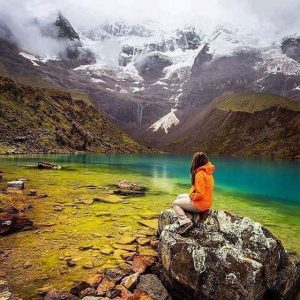
Attabad Lake:
Attabad Lake, located in Gojal, Hunza Valley (North of Pakistan) was formed in Attabad Village in January 2010. Before it was just a mountainous terrain and village with residents living their lives within their community with less or no tourists from all over the country. Lake was formed due to massive landslide 14km upstream of Karimabad.
At the time of its formation, the local residents had no idea that there would be a lake formed that would hold so much beauty and would become a famous destination for tourists. The lake connects the Hunza Valley to Sost Village. The beauty of this region is unique and one can easily guess this the moment you enter this region, the vegetation, the smell in the air, it’s all different.
Having shared the historical details of the lake, let me guide about the journey and share my story too. It is 12 hours and 25 minutes’ journey by road from Islamabad, covering a distance of approximately 580km. The nearest airport is of Gilgit.
From Gilgit airport, you can travel to Hunza by road. While traveling by road from Islamabad, the preferable route is using the Karakoram Highway via Mansehra- Narran- Jalkhad and Chilas Road. Quite often, there are multiple landslides during the journey that could add to the traveling time.
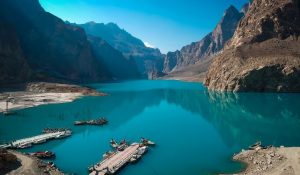
Kachura Lake:
Kachura is located 35 KMs from the center of Skardu city. This beautiful valley lies on the left bank of The Great Indus River. The lake is basically dived into two small regions, The Upper and Lower Kachura. Both the Upper and Lower Kachura have their own beauty. Choq Valley and Upper Kachura Lake (Froq Cho) are situated in the upper region of Kachura while Lower Kachura Lake (Shangrilla Lake) and Dried Lake (Skam Cho) are situated in the lower region of Kachura.
